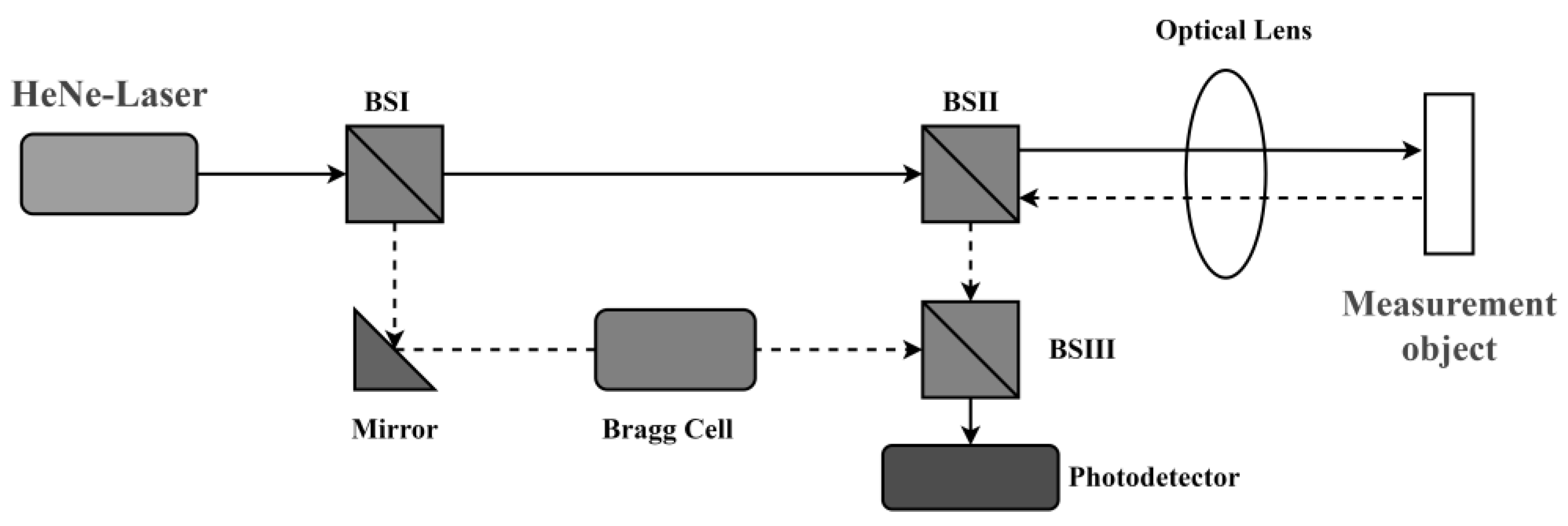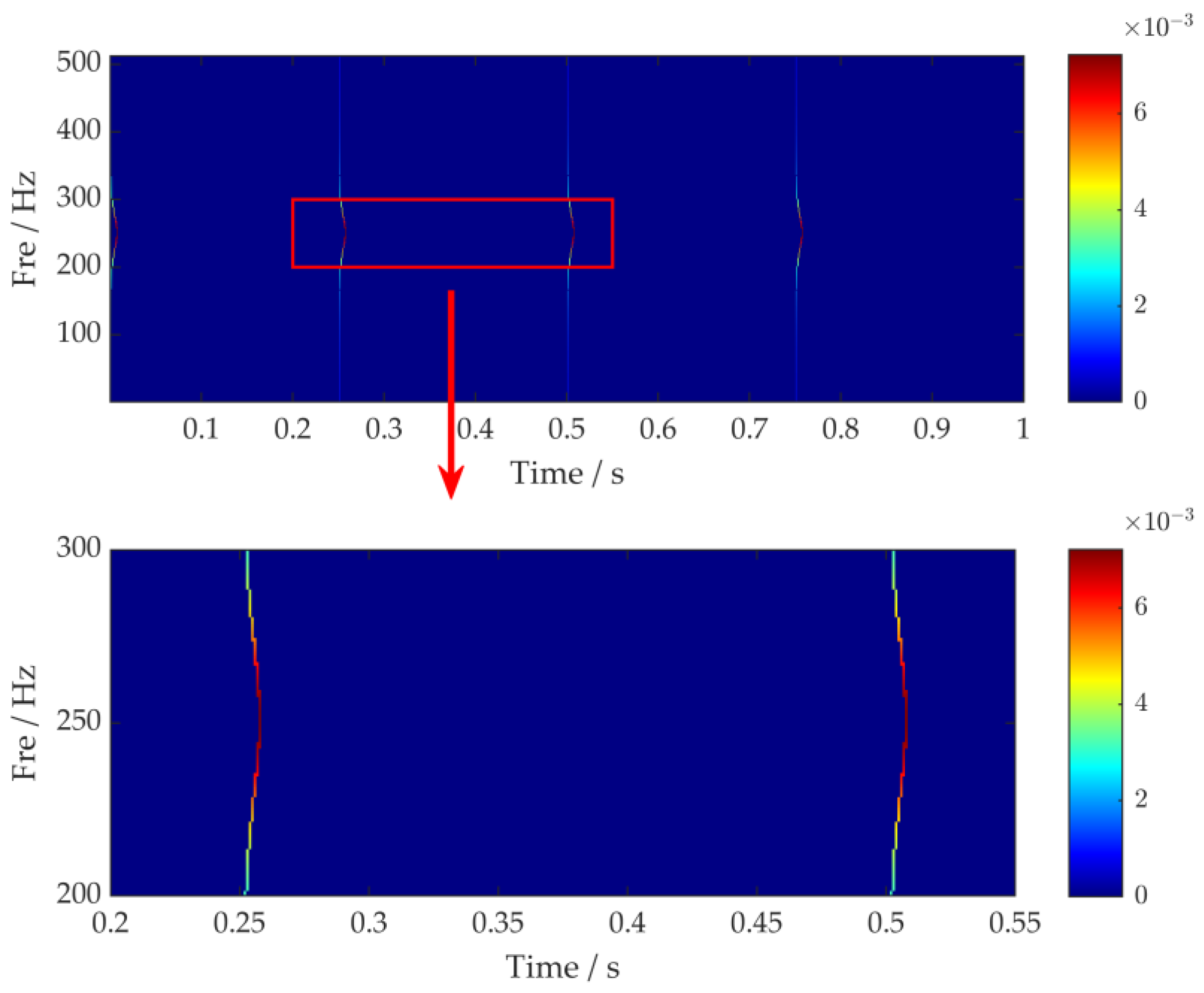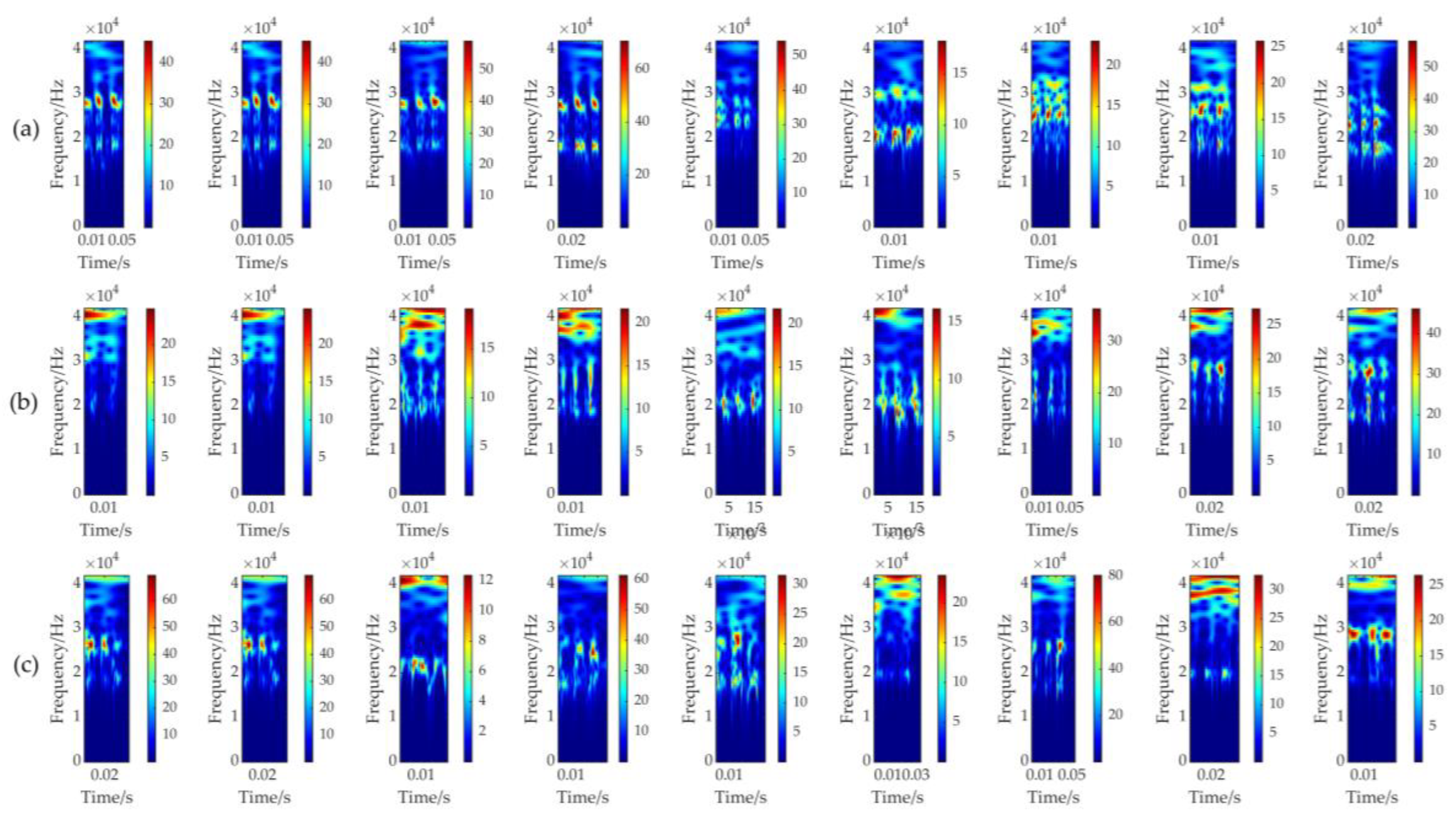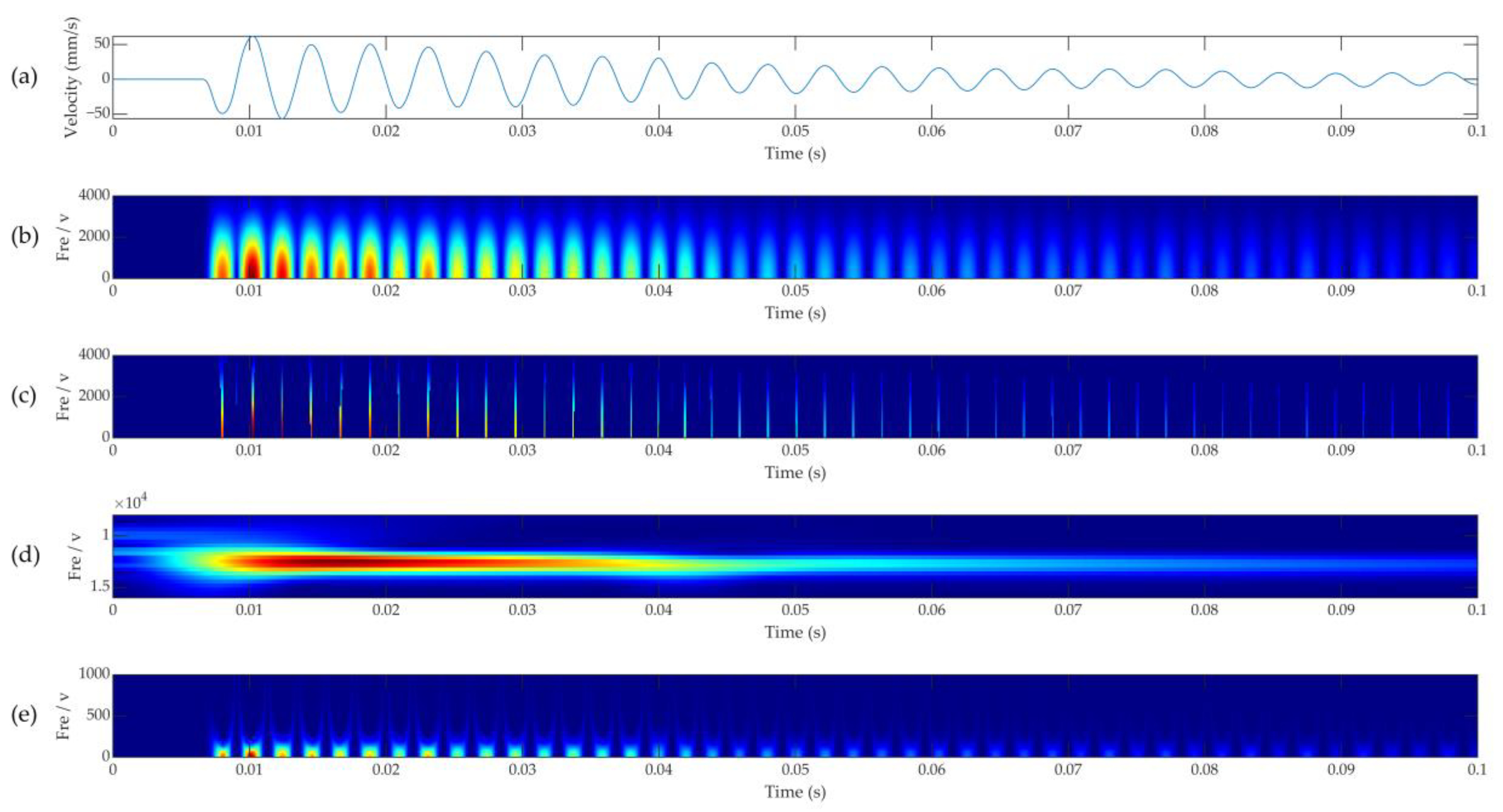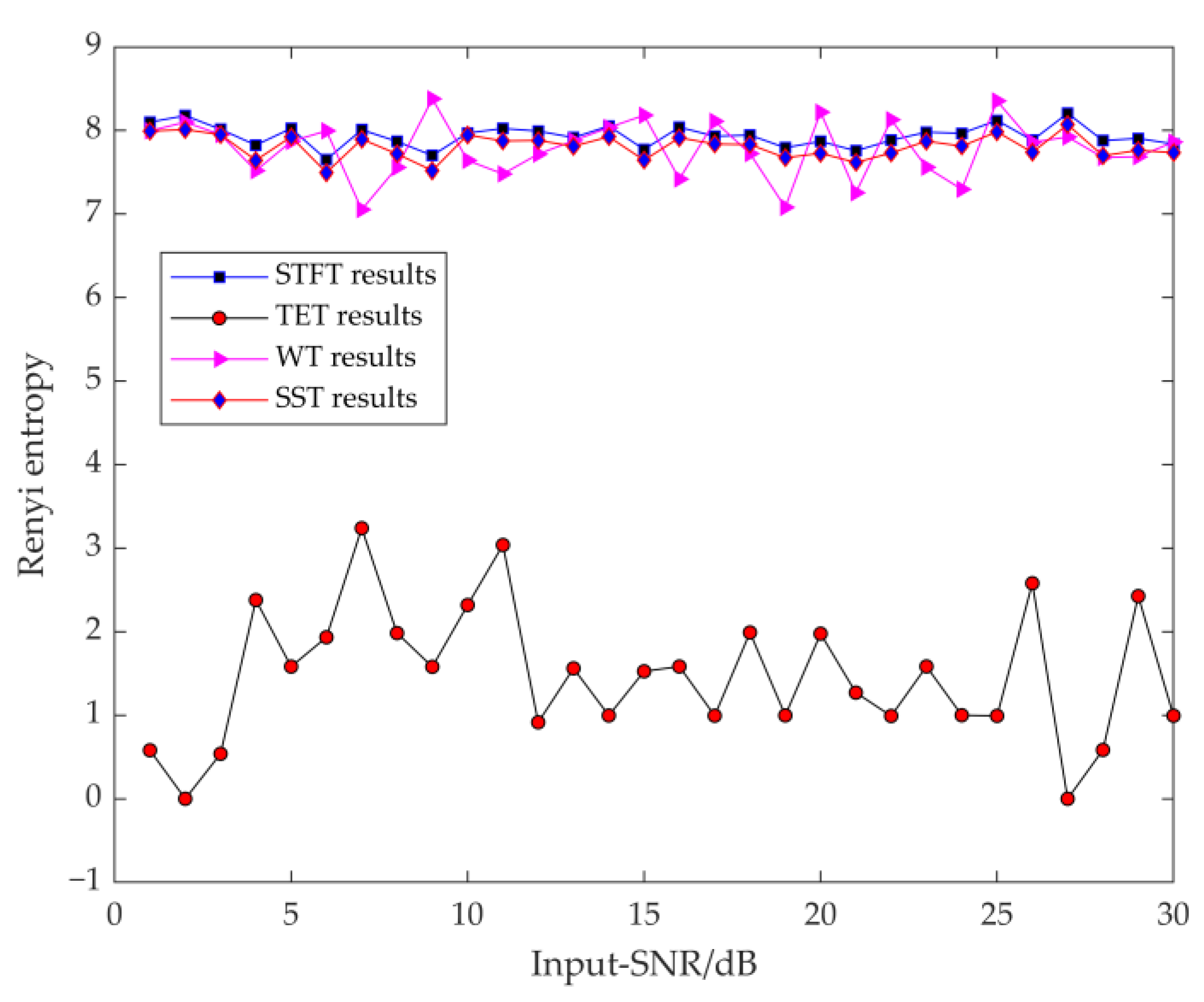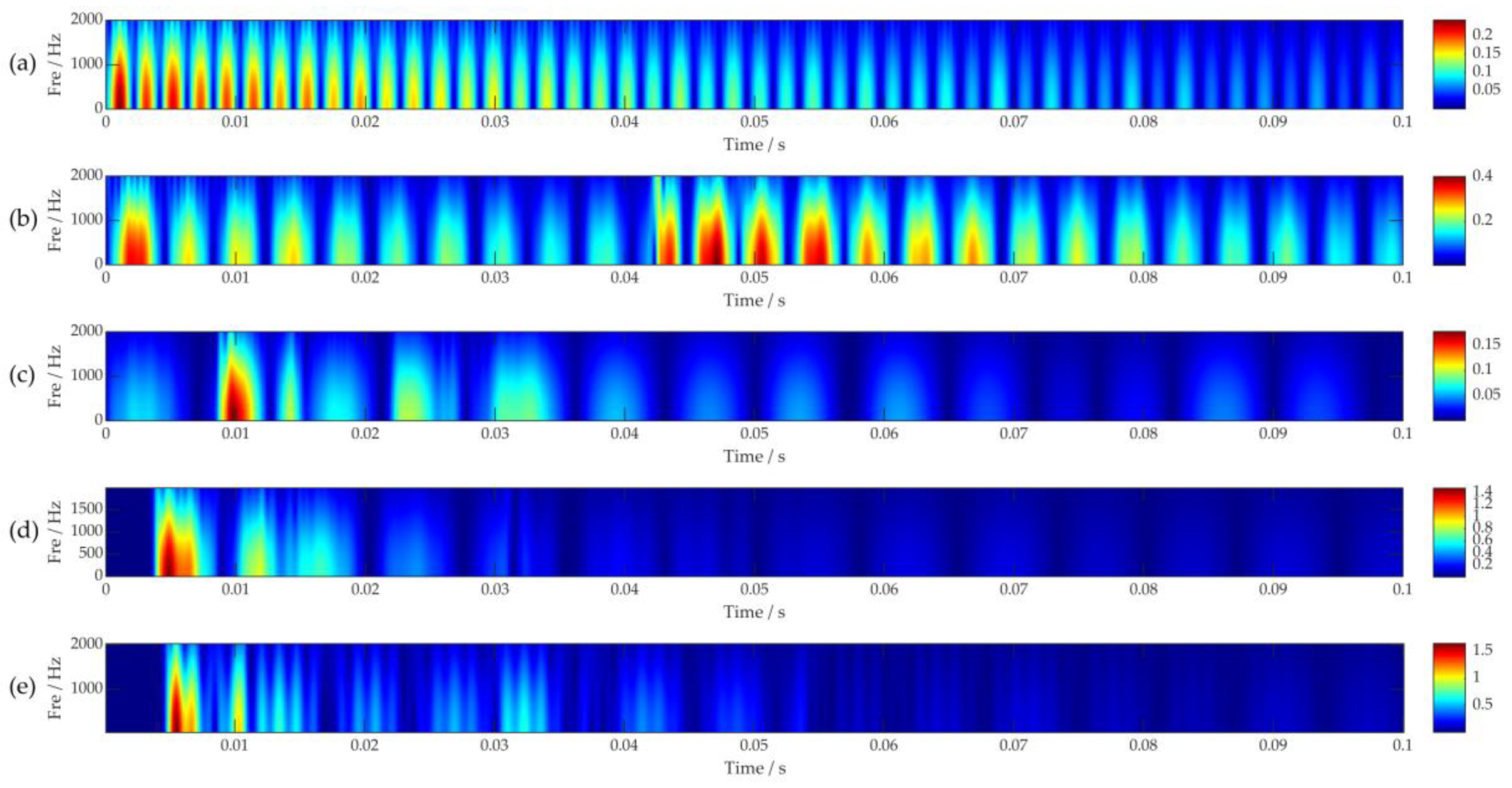3.1. Experimental Design
Based on the preceding theoretical analysis and simulation, experimental measurements of defects in plate welds were carried out in this study. In the experiments, the same welding material was used to prepare welded plates with different defects by modifying the welding torch’s voltage, current, and technique. The dimensions of all experimental weld plates were 13 cm in length, 8 cm in width, 0.5 cm in thickness, and 0.8 cm in weld width.
Figure 6 illustrates the experimental process, including the weld plate preparation site, the experimental plates, and enlarged views of their defective features.
The experimental samples contained one normal weld plate and four weld plates with different defects, and the defect types were, in order, incomplete penetration, porosity, arc pit, and weld nodules overflow. As shown in
Table 1, specifically, plate 1 is a normal welded plate; plate 2 has an incomplete penetration defect, characterized by the insufficient penetration of the welding material, leading to an inadequate backside weld and a visible weld seam; plate 3 is a porosity defect, caused by air infiltration during the welding process, resulting in a shallow depth and large-radius pores; plate 4 is an arc pit defect, caused by the instability of the electric arc or excessive cooling, insufficient weld material saturation, and a flat or slightly depressed weld seam surface; and plate 5 has a weld nodule overflow defect, caused by an excessive current or slow welding speed, characterized by an excessive solder or even overflow.
Since the defects are small in size and difficult to accurately identify with the naked eye at a distance, a measurement system was designed to obtain vibration information. The object to be measured was fixed on the vise of the experimental bench, and the laser beam emitted from the optical hair of the laser vibration meter was utilized to align with the measurement point affixed with a reflective sheet and tapped periodically at the upper-right corner of the soldering plate. By collecting the vibration signal of the measured object and comparing it with the control experiment, the purpose of distinguishing the defects of the plate is achieved.
In order to verify the effect of the Doppler laser vibrometer on the detection of defects in welded plates, the experiment was designed to take fixed-point measurements on multiple welded plates and collect the corresponding vibration signals, after which the laser vibrometer was calibrated and verified. According to the JJG 676-2019 [
23] “Vibrometer Calibration Regulations”, the calibration was conducted in the acoustic vibration laboratory of the Zhejiang Institute of Metrology and Research. The field measurement diagram is shown in
Figure 7. The main equipment used in this calibration includes a standard vibration table, an accelerometer (vibration standard set), and a dynamic signal analyzer.
The measured calibration results are shown in
Table 2, and the amplitude linearity of the laser vibrometer is summarized in
Table 3, when the reference frequency is 80 Hz. It can be seen that the relative expanded uncertainty of the calibration results of the velocity amplitude error of the laser vibrometer used in the experiment is
,
. This shows that the measurement results have the advantages of high accuracy, high reliability, and suitability for high precision requirements. These advantages make the measurement results applicable in scientific research, engineering testing, quality control, and other fields.
3.2. Comparison of Experimental Signal Processing
The vibration signals of the tapped welded plate acquired by the laser vibrometer are processed in MATLAB for signal processing and comparative analysis. In this section, the algorithm implementation of the continuous wavelet transform (CWT) and short-time Fourier transform (STFT) on defective welded plates is shown sequentially. The horizontal axis of the image represents time, and the vertical axis represents frequency. The color represents magnitude: the closer the pixel point is to the light color (or warm colors, such as red), the larger the magnitude; the closer the pixel point is to the dark color (or cool colors, such as blue), the smaller the magnitude. The images of nine points at different locations in the intact plate 1 in
Figure 8a and plate 4 with arc pit defects after CWT are presented in
Figure 8b for comparison, with each image corresponding to three vibration measurement signals from a measurement point. Each subplot represents a time–frequency display of the vibration signal generated by three consecutive knocks at one measurement point of a plate. As shown in
Figure 8, the distribution of the three tapping signals at the same measurement point on the same plate is similar, and the signals from a normal welded plate are concentrated in the 2 kHz to 3 kHz region with normal energy intensity, while a defective welded plate produces a large number of signals with low amplitude but high frequency in the region above 4 kHz. On the same welded plate, the characteristics of multiple tapping signals at the same location are basically the same, and the characteristics of signals at different locations on the same plate are also basically the same. This indicates that the time–frequency distribution patterns are similar for similar defect types. In conclusion, the defect types are different, and their corresponding wavelet time–frequency images are also different. The vibration signal images of different defective plates at the same measurement positions are similar, and the welded plate defects can be recognized initially. However, this WT identification is not stable, and signal spreading over a large area is not conducive for the efficient extraction of specific features. For example, when dealing with other defects, such as the porous defect represented in
Figure 8c, the plate defect features can still be identified, but it is more difficult to intuitively distinguish the difference between the porosity in
Figure 8c and the different features of the arc pit in
Figure 8b. This indicates that the complexity of the WT extraction features, along with the interfering factors, is not conducive to differentiating between the different types of defects.
The STFT is used to measure the same corresponding position of each plate, and three vibration signals are taken as a group to represent the signal characteristics of different welded plates, which include the signals of the normal plate, the incomplete penetration weld plate, the porous plate, the arc pit plate, and the weld nodule plate, in order from left to right in
Figure 9a. By comparing the vibration signals of different plates at the same position after STFT processing, as shown in
Figure 9b, it can be seen that the main frequency scale represented by normal plates is stable and concentrated in the range of 200 Hz to 300 Hz, while defective plates are significantly lower than this frequency range, being below 100 Hz. In the same scale, there are regular differences in the frequency ranges corresponding to different types of defects; for example, the main frequency range of the incomplete penetration weld plate is around 100 Hz, while the main frequency range of the porous welded plate is around 50 Hz, and so on. Compared with the results of the WT transformation, the STFT presents a more concentrated signal and can initially determine the type of defects. Whether it is WT transformation or STFT transformation, after processing, the signal characteristics are presented in the form of an image, which can be used to initially determine the defects. However, its resolution is limited by the size of the window and may exhibit spectral leakage; therefore, through a further optimization of the algorithm, the TET algorithm is used to analyze the vibration signals and detect defects.
The TET algorithm was first used to analyze the signal of the normal plate. The TF representation of the vibration signal at the first sampling point of normal plate 1 is shown in
Figure 10a. The resultant repetitive transient shown by TFA extends the TF features to the TF plane, which provides more important information than a single time-domain analysis. In
Figure 10c, the proposed TET method produces a centrally represented TF result, which provides better TF localization capability. The TF results of WT and STFT are weakly aggregated as compared to TET [see
Figure 10b,d]. Similarly, although the spatial-time frequency transform (SST), which is designed to analyze the frequency characteristics of signals in space and time, is intended to yield sharper TF results, the SST results in
Figure 10e are still unsatisfactory. In summary, limited by the Heisenberg measurement uncertainty principle, the STFT and WT cannot provide an energy-focused TF representation, and the SST does not give an energy-focused TF result. In contrast, in
Figure 10c, the TET results, which appear to be much more clustered than in the other TFA methods, with a better high-resolution time–frequency analysis capabilities are presented.
3.3. Formatting of Mathematical Components and the Evaluation of Performance Indicators
In order to objectively evaluate the performance of the generated TF representations and effectively extract the transient components from different methods, two quantitative metrics, Rényi entropy and kurtosis, are introduced. These two metrics are used to evaluate the energy distribution properties and shape characteristics of the TF representation, respectively. The α-order Rényi entropy of the TF representation is defined as follows:
where the order of which is usually set to
. The low Rényi entropy of the TF results indicates that the TET method generates a more centralized representation of the TF and provides a more accurate time-varying TF characterization.
Gaussian white noise, with a signal-to-noise ratio of 1 to 30 dB, is added to the numerical signal, as shown in
Figure 11. The TFA methods (STFT, WT, SST, and TET) were used to process the noise-containing signals. The Rényi entropy of these TF representations generated by different TFA methods was calculated, as shown in
Figure 11. This shows that the TET results have the smallest Rényi entropy at each noise level, indicating that TET exhibits strong robustness in processing noise-containing signals and is able to effectively display the most concentrated signal features.
Kurtosis, as a key indicator of signal crestiness, can keenly capture the transient features in the fault signal. The larger the kurtosis of the reconstructed result of the TFA method, the stronger the extraction capability of the method. The experimental results show that, as illustrated in
Figure 12, with the gradual increase in the external noise level, the kurtosis value of the original signal decreases, which affects the extraction quality of the transient features of the signal. However, under the same noise level, the kurtosis value of the TET recovered signal always maintains at a high level, which demonstrates a stronger transient feature retention capability compared to the original signal, and it is also able to effectively extract the transient features of the signal in a noisy environment.
Table 4 shows the Rényi entropy values of several TF analysis results, and this quantitative metric intuitively verifies the superiority of the method proposed in this paper in terms of TF localization capability.
In addition,
Table 5 evaluates the efficiency of the above TFA methods in practical applications, and the processing time of the TET method is within 1 s, indicating a high level of efficiency as well.
Further, the transient components extracted by the TET method are significantly improved, in terms of the transient characteristics shown in
Figure 13b, compared to the original signal (see
Figure 13a), which are closer to the real characteristics of the resulting vibration signal.
In order to further study the application of the TET algorithm in the defect detection of welded plates, the center positions of the measurement signals (ban121, ban221, ban331, ban431, and ban541) were used as representatives of all the measurement points of the five plates for the experiments. The actual point map is shown in
Figure 6, and the experimental signal acquisition for each plate covered nine positions, and three tapping experiments were conducted at each position, totaling 27 × 5 sets of characteristic signal data. The naming rules for the collected plate signals follow the logic of “plate number + point number + vibration signal generation sequence number”. The placement of the data measurement points follows the principles of traversing the plate, close proximity, proximity to the weld seam, and center symmetry.
Section 3.2 shows that the STFT is more effective in processing vibration signals for defect identification. By improving the algorithm, the researcher compares the image effects of all the points at the same location in different welded plates under the influence of STFT and TET. The results show that the signal characteristics within the same plate are basically the same, and the signals at different locations on the same plate have a high degree of similarity. Therefore, according to the principle of measurement point arrangement, the measurement signal at the center position of each plate is selected to represent the defective features of the corresponding welded plate. The different defective feature signals are displayed in time–frequency diagrams, such as in
Figure 14 and
Figure 15, for further comparison and analysis.
As shown in
Figure 14, the vibration signals of the five welded plates demonstrated obvious differences in their features after STFT processing. The signal features corresponding to different plates vary significantly, but the signals are poorly aggregated, resulting in more frequency components and dispersion in the spectrogram, which is detrimental to feature extraction and may increase the risk of misclassification. In contrast,
Figure 15 demonstrates the features of the vibration signals of the same five welded plates after TET processing. The results show that the signals from the experimental plates exhibit a better performance in terms of energy concentration, high peaks, transient component decomposition, and extraction, even with different defects.
Analyzing the frequency change and amplitude change in
Figure 15, the duration of the tapping signal is 0.1 s. The change in amplitude follows the energy decay law, but there are regular differences in decay time and amplitude change for different types of welded plates.
Figure 15a represents the time–frequency diagram of the normal plate, where the signal energy is mainly concentrated between 0.002 and 0.04 s, with an amplitude close to 0.1, starting to decay from 0.02 s. The decay amplitude and rate are relatively smooth, showing a strong signal aggregation and regularity.
Figure 15b represents the time–frequency diagram of the incomplete penetration weld plate, where the signal rapidly attenuates in 0.04 s, followed by a trend of initial enhancement, and then attenuation between 0.04 and 0.1 s. The signal energy is mainly concentrated at 0.05 s, with an amplitude greater than 0.1, and the energy density is higher in the attenuation stage.
Figure 15c represents the time–frequency diagram of the porous-welded plate, where the signal energy gathers at 0.01 s, with an amplitude of 0.05, and the subsequent decay phase has a smaller amplitude and high density.
Figure 15d represents the time–frequency diagram of the arc pit weld plate, with more high-amplitude energy, mainly concentrated near 0.005 s, with an amplitude as high as 0.4, rapidly decaying from 0.01 s, with a short decay completion time.
Figure 15e represents the time–frequency diagram of the weld nodule plate, with less high-amplitude energy, appearing from 0.005 s to 0.01 s, with an amplitude as high as 0.5, and the energy rapidly decaying, with a shorter decay completion time.
In summary, by comparing the time–frequency diagrams, the normal welded plate maintains good regularity and integrity, while the four different defects show distinct time–frequency distribution patterns. This difference provides an important basis for defect identification, and the time–frequency diagrams processed using the TET algorithm can extract and demonstrate the signal characteristics of the welded plates more effectively.
